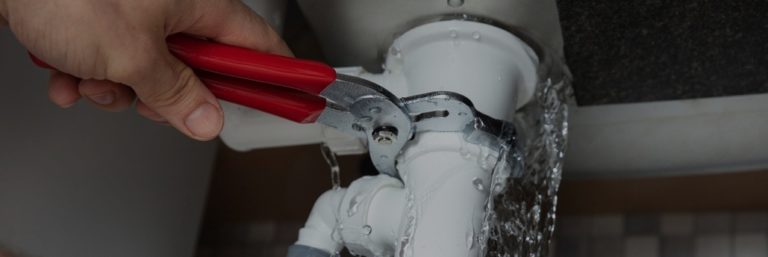Just how to Inspect If Your Residence Has a Concealed Leakage
Just how to Inspect If Your Residence Has a Concealed Leakage
Blog Article
The article following next relating to Locating water leaks is exceedingly captivating. Don't bypass it.

Early discovery of leaking water lines can reduce a prospective disaster. Some tiny water leaks might not be noticeable.
1. Check Out the Water Meter
Every home has a water meter. Examining it is a proven way that helps you find leaks. For starters, shut off all the water resources. Guarantee nobody will certainly flush, use the faucet, shower, run the cleaning machine or dishwashing machine. From there, go to the meter and also watch if it will alter. Considering that nobody is using it, there ought to be no movements. If it relocates, that shows a fast-moving leak. Furthermore, if you detect no changes, wait an hour or two and also examine back once again. This indicates you might have a sluggish leak that could also be below ground.
2. Inspect Water Consumption
Assess your water bills and also track your water usage. As the one paying it, you ought to discover if there are any disparities. If you detect sudden changes, in spite of your intake being the same, it suggests that you have leaks in your plumbing system. Remember, your water costs must fall under the very same variety each month. A sudden spike in your bill suggests a fast-moving leak.
A constant boost every month, also with the same behaviors, shows you have a slow-moving leakage that's likewise gradually escalating. Call a plumber to completely check your property, specifically if you feel a cozy location on your floor with piping beneath.
3. Do a Food Coloring Examination
When it pertains to water usage, 30% comes from bathrooms. Examination to see if they are running correctly. Decrease flecks of food color in the storage tank and also wait 10 minutes. There's a leakage in between the container and dish if the shade in some way infiltrates your bowl during that time without flushing.
4. Asses Exterior Lines
Don't neglect to examine your outside water lines too. Must water seep out of the link, you have a loose rubber gasket. One small leakage can squander loads of water and also spike your water expense.
5. Evaluate and also Examine the Scenario
Property owners need to make it a behavior to examine under the sink counters as well as even inside cupboards for any bad odor or mold development. These 2 red flags indicate a leak so prompt attention is needed. Doing routine evaluations, also bi-annually, can conserve you from a significant trouble.
Inspect for discolorations and also weakening as many appliances and pipes have a life expectations. If you think leaking water lines in your plumbing system, don't wait for it to intensify.
Early discovery of dripping water lines can reduce a prospective calamity. Some small water leaks may not be noticeable. Examining it is a proven means that aids you discover leaks. One tiny leak can squander bunches of water and spike your water bill.
If you think dripping water lines in your plumbing system, do not wait for it to rise.
How to Know If Your Home Has a Hidden Leak
Water Meter Reveals Inexplicable Water Usage
If you’d like to test whether or not there’s a leak somewhere in your home, you can do this using your water meter. Here is how to conduct the test:
Don’t use any water in your home for at least 30 minutes; this also means not turning on faucets or water-using appliances.
Go outside, and check your water meter for activity.
If your water meter shows that there was activity, even though no one was using any water, this proves that there is a leak in your home.Visible Mold or Mildew Growth
Leaks behind walls create moist, dark environments that allow mold and mildew to grow and thrive. Eventually, you might see mold growth forming on the wall closest to a hidden leak.
If mold is growing in an area that receives a high amount of moisture, such as a bathroom, it may simply be an indication that better ventilation is needed. However, if you see mold growth on a wall or the ceiling in an area where you would not expect, you probably have a hidden leak.
Musty, Mildew Odor
Sometimes you might not be able to see the mold or mildew that is growing as a result of a leak. However, the smell can give the problem away just as easily. If you catch a whiff of something musty, there’s a good chance that old water is collecting somewhere in your home that you can’t see.
Stained/Warped Walls, Ceilings, or Floors
When your home soaks up water, a variety of red flags can become visible, including ceiling stains, bubbling drywall, warped walls, and sagging floors. While these issues can be caused by excess humidity, they can also be signs that a pipe or plumbing connection has started leaking behind your walls.
Inexplicably High Water Bill
After a while, you get a general sense for what your water bill should be. If you own a pool or sprinkler system, your bill will tend to be higher during summer. However, if you receive a water bill that seems especially high, and you can’t figure out what caused it, then you may have a hidden leak somewhere that’s increasing your bill.
https://www.plumbingjoint.com/blog/2019/july/how-to-know-if-your-home-has-a-hidden-leak/

I have been very focused on Hacks to detect leaks and I hope you enjoyed reading the piece. Sharing is nice. You won't know, you will be doing someone a favor. Thanks a lot for your time. Kindly come visit our blog back soon.
Report this page